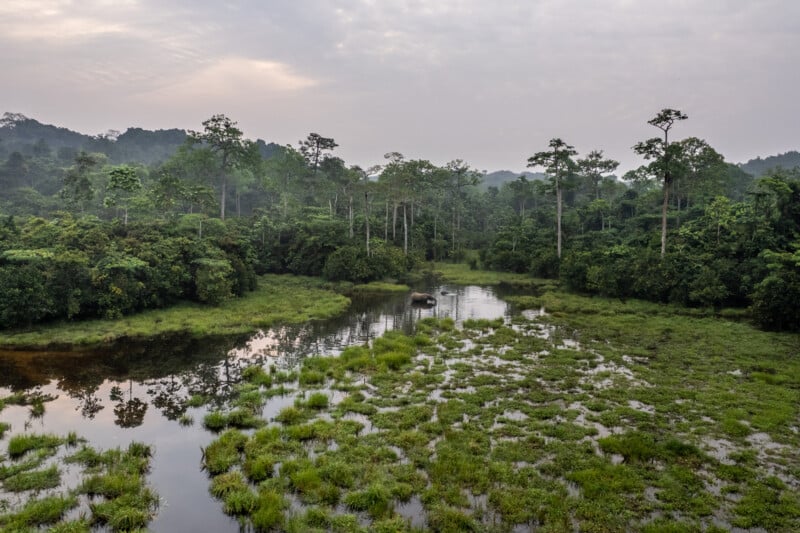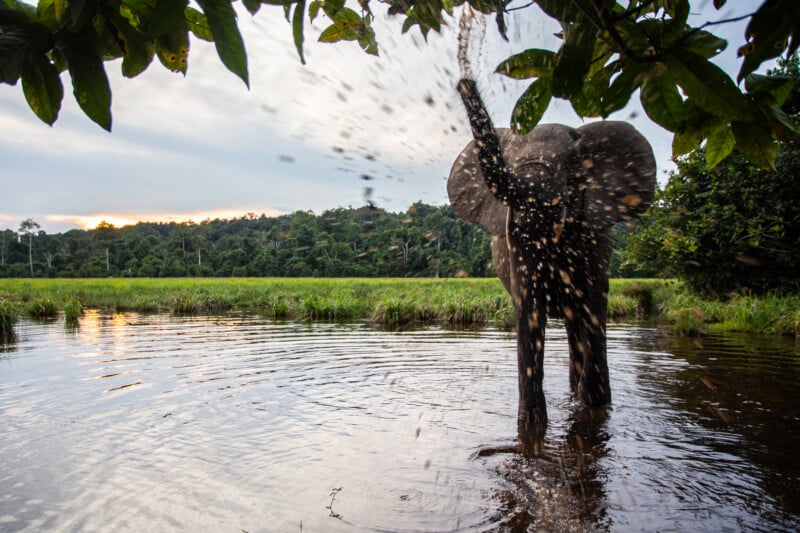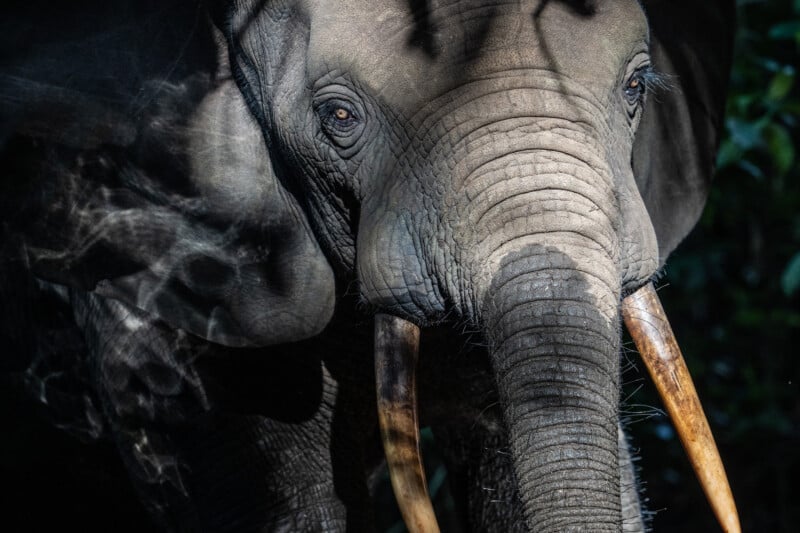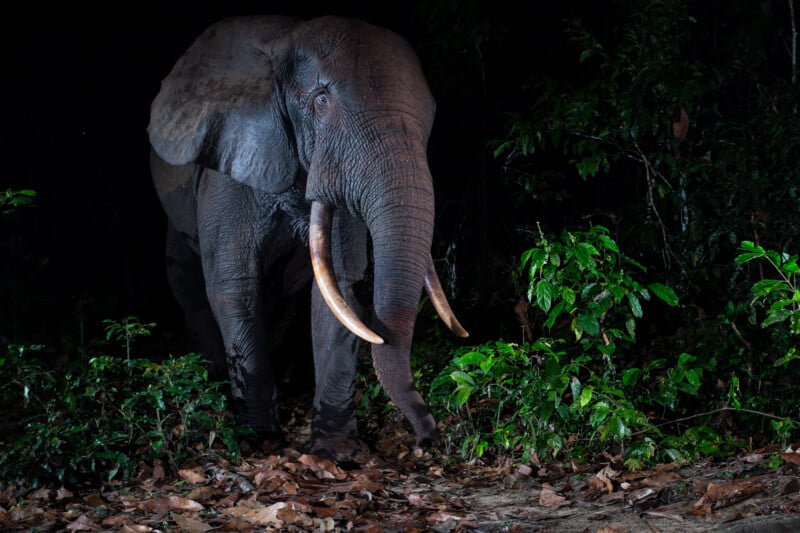Photographing Forest Elephants in the Congo

Deep in the Congo Basin, in a remote corner of Nouabalé-Ndoki National Park, lies Mbeli Bai, a vast forest clearing where wildlife emerges from the dense jungle. Unlike open savanna landscapes, the rainforest hides its inhabitants behind thick vegetation, making photographing species like forest elephants particularly difficult.

The Journey into the Rainforest
Reaching Nouabalé-Ndoki National Park is no simple feat. After arriving in the Republic of Congo, I embarked on an exhausting multi-day journey; first a 12-hour drive to the town of Ouesso, then five hours by boat up the Sangha River to the park’s headquarters at Bomassa. From there, the final leg involved traveling by 4×4, a dugout canoe, and finally trekking into the rainforest on foot.

Despite the arduous journey, the moment I first gazed out over Mbeli Bai, I knew it had been worth it. Bais like this serve as gathering places for wildlife, offering a rare opportunity to observe animals that are typically hidden including forest elephants, gorillas, and sitatungas. It was a magical scene, but I quickly realized that capturing it on camera would be a challenge.

The Challenge of Photographing Forest Elephants
Unlike their savanna relatives, forest elephants are much more elusive and wary of human presence. They inhabit densely vegetated landscapes and can easily melt away at the first sign of disturbance. They can also be very aggressive, which makes it potentially very dangerous to get close enough in the thick vegetation for a clear shot. Even at the bai, with long telephoto lenses, getting impactful shots was nearly impossible.

That’s where my Camtraptions camera traps might help.

However, setting up camera traps for forest elephants posed its own challenges. These intelligent animals quickly noticed foreign objects in their environment. Some approached curiously while others dismantled my setups entirely. Throughout the project, elephants were both my most impressive subject and my greatest obstacle.

Placing the Camera Trap at Mbeli Bai
I worked closely with WCS researchers, who guided me to a well-used elephant pathway at the edge of the bai. The location was ideal for photographing the elephants with the open expanse of Mbeli Bai as a dramatic backdrop. But it came with a risk as the camera was very exposed. If the elephants noticed it, they could rip it off its mount in an instant.

The setup included a remotely triggered camera in a strong housing and a PIR sensor to detect the presence of the elephant. I avoided using flashes, as I was after daylight images and I did not want to attract unnecessary attention to the setup. With everything in place, all I could do was wait and hope that the camera would survive long enough to capture the images I envisioned.
A Close Encounter in the River
In the Congo rainforest, elephants can be a serious hazard. They are unpredictable, and the thick vegetation means you can sometimes end up far closer to them than intended before realizing they’re there. Fortunately, the Bayaka trackers I was with seemed to have a sixth sense for detecting and deftly detouring around them. But sometimes, an elephant had other ideas.

One day, as we attempted to cross a river, a large bull elephant appeared in our way and decided he wasn’t moving anytime soon. He stood midstream, leisurely feeding, completely unfazed by our presence. With no safe way around, we had little choice but to wait him out.
For two hours, he fed in the river. While this could have been a frustrating delay, it actually presented an incredible photographic opportunity. Unlike in the dense forest, here I had a completely unobstructed view of him.

![]()
![]()
Everything aligned when a shaft of sunlight broke through the canopy, illuminating the elephant’s side and reflecting off the water. It was a fleeting moment, but one that made the wait worthwhile. Eventually, satisfied with his meal, the elephant moved on, and we were finally able to cross.
![]()
![]()
![]()
Returning to the Camera Traps
When I returned to the camera trap, I scrolled through the images, hoping for a decent shot. And there it was—a magnificent male forest elephant with large tusks, perfectly positioned against the backdrop of Mbeli Bai.

Beyond the excitement of capturing these images, I hope they serve a greater purpose: to highlight the need to protect the Congo Basin and its extraordinary wildlife. Forest elephants play a crucial role in shaping their environment, yet they are increasingly threatened by habitat loss and poaching.

Wildlife photography has the power to connect people with species they may never otherwise see, and in doing so, can help drive conservation efforts. With so much of the rainforest’s biodiversity still hidden and poorly studied, images like these serve as a reminder of what’s at stake—and why protecting these habitats is more important than ever.

Between the long journey, the humidity, the insects, and the elephants interfering with my setups, this project wasn’t easy. But that’s exactly what made it so rewarding. The rainforest doesn’t give up its secrets easily, and that’s why I keep coming back.
I would like to thank WCS Congo, all the trackers, rangers, and researchers who supported this project, and those who helped plan and coordinate it. You can find more of my camera trap photos from this project, showcasing a variety of rare and elusive wildlife such as leopards, duikers, red river hogs and even an African golden cat, in my blog post, Camera Trapping in the Congo.
About the author: Will Burrard-Lucas is a wildlife photographer and founder of Camtraptions. He dedicates much of his time to working on long-term book and conservation projects in Africa. Find out more at www.willbl.com.